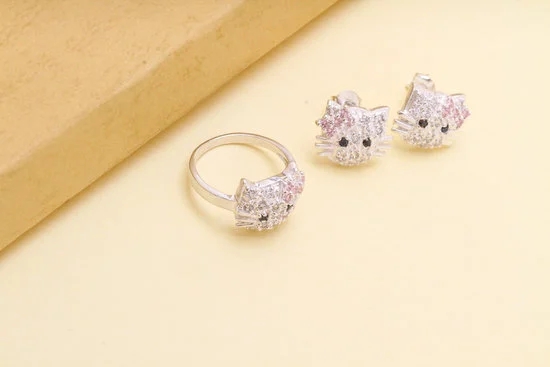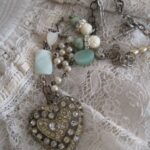The rise of online diamond shopping has revolutionized the way people buy precious jewelry. Gone are the days when purchasing a diamond required making multiple trips to brick-and-mortar stores and dealing with limited options. Today, buying diamond jewelry online offers convenience, a wide selection, and competitive prices. In this blog post, we will provide a comprehensive guide on how to navigate the world of online diamond shopping, ensuring that you make a confident and informed purchase.
The benefits of shopping for diamonds online are numerous. Firstly, it allows you to browse through an extensive collection of diamonds from the comfort of your own home. Online retailers offer a vast range of cuts, colors, clarities, and carat weights, giving you more options to find the perfect diamond that matches your preferences and budget. Additionally, online platforms often provide detailed descriptions and high-resolution images of each diamond to help you make an informed decision.
Furthermore, buying diamond jewelry online offers competitive pricing compared to traditional jewelry stores. The lower overhead costs associated with operating online allow retailers to offer lower prices without compromising on quality. Moreover, many reputable online jewelers provide certifications for their diamonds as proof of authenticity and quality assurance.
In this blog post, we will guide you through every step of the process to ensure that you have all the knowledge and tools necessary to buy diamond jewelry online confidently. From understanding the 4 C’s of diamonds to researching reliable online jewelers and decoding diamond certifications, we will cover it all.
By following our comprehensive guide, you can embark on your online diamond shopping journey with confidence, knowing that you are equipped with the information needed to make an informed purchase decision.
Understanding the 4 C’s of Diamonds
When it comes to buying diamond jewelry online, understanding the 4 C’s is essential. The 4 C’s refer to cut, clarity, color, and carat weight, which are crucial factors that determine a diamond’s overall quality and value. By familiarizing yourself with these characteristics, you can make an informed decision and prioritize your preferences based on your personal taste and budget.
The first C is cut, which refers to how well a diamond has been shaped and faceted. This determines the diamond’s ability to reflect light and sparkle. The cut is graded as Excellent, Very Good, Good, Fair, or Poor. The higher the grade, the more brilliant and dazzling the diamond will appear.
Next is clarity, which assesses the presence of any internal or external flaws known as inclusions or blemishes within the diamond. Clarity grades range from Flawless (no visible imperfections) to Included (inclusions visible to the naked eye). While flawless diamonds are rare and expensive, there are often eye-clean diamonds available at lower clarities that still appear flawless to the naked eye.
Color refers to a diamond’s absence of color. The less color a diamond exhibits, the more valuable it is considered. The Gemological Institute of America (GIA) grades color on a scale from D (colorless) to Z (light yellow or brown). Colorless diamonds are typically more valuable and desirable.
Lastly, carat weight represents how much a diamond weighs. One carat equals 200 milligrams or 0.2 grams. Larger diamonds are rarer and costlier than smaller ones because they require more rough material to produce.
In order to prioritize these factors based on your personal preferences and budget when buying online diamond jewelry:
- If sparkle is important to you, prioritize a higher cut grade.
- If you prefer a visually clean appearance without visible flaws, prioritize a higher clarity grade.
- If colorlessness is your preference, prioritize a higher color grade.
- If size is your priority and you can compromise on the other factors, consider a larger diamond with a lower cut or clarity grade.
By understanding the 4 C’s and their significance in determining diamond quality, you can make an informed decision when purchasing diamond jewelry online. Take the time to research and understand what each C represents in order to find the perfect diamond that meets your preferences and budget.
| 4 C’s | Description |
|---|---|
| Cut | The way a diamond has been shaped and faceted; determines the diamond’s ability to reflect light and sparkle |
| Clarity | The presence of any internal or external flaws within the diamond; graded based on visibility of imperfections. |
| Color | The absence of color in a diamond; graded from D (colorless) to Z (light yellow or brown) |
| Carat weight | Determines how much a diamond weighs; one carat equals 200 milligrams or 0.2 grams. |
Researching Reliable Online Diamond Jewelers
When it comes to buying diamond jewelry online, one of the most crucial steps is finding a reputable and reliable online retailer. With so many options available, it’s important to do your research and ensure you are making a purchase from a trustworthy source. Here are some key factors to consider when researching online diamond jewelers:
- Customer Reviews: One of the best ways to gauge the credibility of an online diamond jeweler is by reading customer reviews. Look for websites that display honest and detailed feedback from previous customers. Pay attention to overall satisfaction levels, as well as any negative experiences or complaints.
- Certifications: Reputable online diamond jewelers should provide certifications for their diamonds. Look for diamonds that have been certified by recognized grading laboratories such as GIA (Gemological Institute of America) or AGS (American Gem Society). These certifications ensure that the diamond has undergone thorough evaluation by impartial experts.
- Return Policies: Before making a purchase, familiarize yourself with the retailer’s return policy. A reliable online diamond jeweler should offer a clear and fair return policy to protect your interests in case you are not satisfied with your purchase. Look for retailers that offer a generous return period and provide hassle-free returns.
In addition, here are some recommended websites for finding reliable online diamond jewelers:
- Blue Nile: Blue Nile has built a strong reputation as one of the largest online diamond retailers. They offer a vast selection of high-quality diamonds with detailed information about each stone’s characteristics.
- James Allen: Known for their interactive 360-degree videos, James Allen is another popular choice for buying diamonds online. They have an extensive inventory and provide excellent customization options for engagement rings.
- Brilliant Earth: If you are looking for ethically sourced diamonds, Brilliant Earth is a great option. They specialize in conflict-free diamonds and offer a wide range of sustainable jewelry options.
| Online Diamond Jeweler | Key Features |
|---|---|
| Blue Nile | – Large selection of high-quality diamonds
|
| James Allen | – Unique interactive 360-degree videos
|
| Brilliant Earth | – Specializes in ethically sourced diamonds
|
Remember, it’s important to take your time and thoroughly research online diamond jewelers before making a purchase. By considering customer reviews, certifications, return policies, and exploring reputable websites like Blue Nile, James Allen, and Brilliant Earth, you can make an informed decision and have confidence in your online diamond jewelry purchase.
Setting a Budget for Your Diamond Jewelry
Why Setting a Budget is Important
Setting a budget for your diamond jewelry purchase is an essential step in the online buying process. It helps you narrow down your options and ensures that you don’t overspend. By determining how much you are willing to spend, you can focus on finding the best value for your money and avoid any unnecessary expenses. Additionally, having a budget in mind allows you to have more control over your purchasing decisions and prevents impulse buys.
Tips for Setting a Realistic Budget
When setting a budget for your diamond jewelry, consider factors such as your financial situation, personal preferences, and the occasion for which you are buying the jewelry. Here are some tips to help you set a realistic budget:
- Determine how much you can comfortably afford: Assess your current financial situation and decide on an amount that won’t strain your finances. Remember that diamond jewelry is an investment, so it’s crucial to choose something within your means.
- Research price ranges: Look into the prices of diamonds and diamond jewelry to get an idea of what to expect within your budget range. This will help you understand the market and make informed decisions during your search.
- Prioritize what matters most to you: Consider which of the 4 C’s (Cut, Clarity, Color, Carat weight) are most important to you when it comes to diamond quality. By prioritizing certain factors, you can allocate more of your budget towards them while compromising on others if needed.
- Seek expert advice: Consult with experts or reputable online jewelers who can provide guidance on setting a suitable budget for your desired piece of diamond jewelry.
- 5.Get multiple quotes: Reach out to different online retailers and compare prices for similar pieces of diamond jewelry. This will give you a better understanding of market prices and enable you to find the best deal within your budget.
The Relationship Between Diamond Quality and Price
It’s important to note the relationship between diamond quality and price. Diamonds that have higher grades in terms of cut, clarity, color, and carat weight will generally be more expensive. However, it is possible to find high-quality diamonds within your budget range by making strategic choices.
For example, you may choose a slightly lower clarity grade if it means getting a larger carat weight or a better cut. It ultimately depends on your personal preferences and what matters most to you. By understanding how different factors influence the price of a diamond, you can make an informed decision that aligns with your budget and desired quality level.
Decoding Diamond Certifications
When buying diamond jewelry online, it’s crucial to understand the importance of diamond certifications. These certifications ensure that the diamonds you are purchasing are authentic and of high quality. They serve as a guarantee that the diamonds have been independently assessed by a reputable third-party laboratory.
There are several well-known diamond grading laboratories that provide certifications, including the Gemological Institute of America (GIA), American Gem Society (AGS), and International Gemological Institute (IGI). These laboratories evaluate diamonds based on various criteria such as cut, clarity, color, and carat weight. Each laboratory has its own grading scales and standards.
To decode diamond certifications, it is essential to understand the information provided in them. The most important information to look for includes the 4 C’s: cut, clarity, color, and carat weight. The cut grade determines how well a diamond reflects light, affecting its brilliance and sparkle.
Clarity refers to the presence of any internal or external flaws in the diamond. Color is evaluated on a scale from D (colorless) to Z (light yellow or brown). Finally, carat weight refers to the size or weight of the diamond.
To make sense of these certifications, it’s helpful to refer to the corresponding grading scales used by each laboratory. For instance, GIA uses an excellent-very poor scale for cut grade, while IGI uses an excellent-poor scale. Understanding these scales will help you assess the quality of a diamond based on its certification.
Selecting the Perfect Diamond
When it comes to buying diamond jewelry online, one of the most crucial steps is selecting the perfect diamond. With a variety of options available, it can be overwhelming to determine which diamond will best suit your personal preferences and requirements. However, with some guidance and knowledge, you can make an informed decision that leaves you satisfied with your purchase.
Start by considering the different diamond shapes. From classic round brilliant to unique princess or emerald cuts, each shape offers its own distinct characteristics. For example:
- Round Brilliant: This shape is known for its maximum sparkle and brilliance due to its precise cut proportions.
- Princess Cut: With its square or rectangular shape, this cut showcases exceptional brilliance and a modern aesthetic.
- Emerald Cut: Characterized by its long, rectangular facets and step-cut design, this elegant shape emphasizes clarity and reflects light in a distinctive way.
Once you have selected a diamond shape that appeals to you, evaluate the quality elements such as color, clarity, cut, and carat weight. Keep in mind that these factors may vary depending on personal preference and budget priorities.
- Color: The color grading scale ranges from D (colorless) to Z (light yellow or brown). Consider whether you prefer a colorless diamond or if a slight hint of color is acceptable.
- Clarity: Diamond clarity refers to the presence of internal or external flaws known as inclusions and blemishes. The clarity scale ranges from Internally Flawless (IF) to Included (I). Determine how important it is for you to have a flawless appearance.
- Cut: The cut of a diamond affects how well it reflects light. Excellent or Ideal cuts result in maximum sparkle and brilliance. Very Good cuts are still high quality but may offer better value for money.
- Carat Weight: Carat weight measures the size of the diamond. Consider how significant carat size is in relation to other quality factors.
Evaluating diamond quality is essential, but also consider your personal style and the occasion for which you are purchasing the diamond jewelry. Some may prioritize a larger size or prefer a specific shape that complements their hand or existing jewelry collection. By taking these factors into account and conducting thorough research, you can confidently select the perfect diamond that meets your needs and preferences.
Remember, the convenience of shopping online extends to viewing multiple options and comparing details side by side. Take advantage of this feature to scrutinize the diamonds available within your desired specifications. Ultimately, selecting the perfect diamond requires a combination of objective criteria and subjective preferences, ensuring you find the ideal piece that brings joy for years to come.
Understanding Different Types of Diamond Jewelry
When shopping for diamond jewelry online, it is important to have a clear understanding of the different types of diamond jewelry available. From engagement rings to earrings, bracelets, and necklaces, each type of jewelry has its own unique features and characteristics. Understanding these differences will help you choose the most suitable type of diamond jewelry for your needs or occasions.
Engagement Rings
Engagement rings are perhaps the most popular type of diamond jewelry. They symbolize love and commitment and are traditionally exchanged during marriage proposals. When browsing for engagement rings online, you will come across a wide variety of designs, settings, and diamond shapes. The classic solitaire ring with a single diamond is a timeless choice, while halo rings feature a central stone surrounded by smaller diamonds for added brilliance. Other popular styles include three-stone rings and vintage-inspired designs.
Earrings
Diamond earrings are versatile pieces that can be worn daily or for special occasions. They come in various styles such as studs, hoops, drops, and dangle earrings. Stud earrings feature a single diamond or a cluster of smaller diamonds set in metal prongs or bezel settings. Hoop earrings are circular in shape and often adorned with diamonds along the front-facing side. Drop and dangle earrings typically feature diamonds hanging from chains or other decorative elements.
Bracelets
Diamond bracelets add elegance and sparkle to any wrist. Tennis bracelets are a popular choice which consist of a continuous line of individually-set diamonds linked together in a flexible band. Bangle bracelets are solid circular bands featuring diamonds either on the entire surface or as accents on certain sections of the bracelet. There are also charm bracelets that allow you to customize with various charms including ones with small diamonds.
Necklaces
Diamond necklaces come in various lengths and designs to suit different styles and occasions. Pendant necklaces feature a diamond or a cluster of diamonds hanging from a chain. Diamond solitaire necklaces have a single diamond pendant, while halo necklaces surround the central stone with smaller diamonds for added sparkle. Tennis necklaces are longer in length and typically consist of a continuous line of individually-set diamonds.
When choosing the type of diamond jewelry that best suits you or your loved one, consider personal style preferences, lifestyle, and occasion. It is also important to know the differences in settings and materials used to ensure durability and longevity. Whether it’s an engagement ring, earrings, bracelet, or necklace, online retailers offer a wide selection of diamond jewelry options to cater to individual tastes and budgets.
Safe and Secure Online Diamond Purchases
When it comes to buying diamond jewelry online, ensuring the safety and security of your purchase is of utmost importance. With the increasing number of online scams and fraudulent activities, it is crucial to take precautions to protect yourself and your investment. In this section, we will discuss essential measures you can take to make safe and secure online diamond purchases.
Firstly, it is essential to choose a reputable and trustworthy online diamond retailer. Look for established retailers that have positive customer reviews and ratings. Additionally, check if the retailer has industry certifications such as the Gemological Institute of America (GIA) or the American Gem Society (AGS), which are renowned for their strict grading standards.
When making an online purchase, always use secure payment methods. Opt for credit cards or trusted third-party services like PayPal that offer buyer protection and encryption for financial transactions. Avoid using debit cards or wire transfers as these may not offer the same level of protection against fraud.
Verifying the authenticity of the purchased diamond upon delivery is another crucial step in ensuring a safe transaction. Inspect the diamond carefully by comparing its physical characteristics with the details provided on the certification. If there are any discrepancies or doubts about the authenticity, consider getting a second opinion from a professional gemologist.
Conclusion
In conclusion, buying diamond jewelry online has become increasingly popular due to its convenience and numerous benefits. By understanding the 4 C’s of diamonds, researching reliable online diamond jewelers, setting a budget, decoding certifications, selecting the perfect diamond, understanding different types of diamond jewelry, and taking necessary safety precautions, consumers can make confident online diamond purchases.
One of the key takeaways from this comprehensive guide is the importance of understanding the 4 C’s – Cut, Clarity, Color, and Carat weight. These factors determine a diamond’s quality and value. By prioritizing these factors based on personal preferences and budget constraints, shoppers can find diamonds that meet their individual needs.
Researching reputable online diamond retailers is also crucial. Considering factors such as customer reviews, certifications, and return policies helps ensure a secure and satisfactory purchase. Recommended websites mentioned in this guide provide excellent resources for finding reliable retailers.
Additionally, setting a realistic budget allows shoppers to get the best value for their money while considering their financial capabilities. Understanding the relationship between quality and price helps consumers make informed decisions about where to allocate their funds.
By following these steps for making confident online diamond purchases outlined in this article, buyers can navigate the digital marketplace more adeptly. The convenience and ease associated with buying diamond jewelry online should not discourage potential buyers but rather empower them to make informed decisions based on their own preferences and requirements.
With the right knowledge and precautions in place, shopping for diamonds online can be an enjoyable experience leading to beautiful pieces that will be cherished for years to come.
Frequently Asked Questions
Is it a good idea to buy a diamond online?
Buying a diamond online can be a good idea, as it offers convenience and access to a wider range of options compared to traditional brick-and-mortar stores. Online retailers often have lower overhead costs, which can result in more competitive prices for buyers.
Additionally, online diamond sellers usually provide detailed information about the diamonds they offer, including certifications and specifications, allowing buyers to make informed decisions. However, it is essential to research and choose reputable online sellers that have positive customer reviews and offer return policies and warranties to ensure a satisfactory buying experience.
What to look out for when buying a diamond online?
When buying a diamond online, there are several key factors to consider. Firstly, it is important to understand the 4Cs of diamonds: carat weight, cut, color, and clarity. These characteristics determine the quality and value of the diamond. Look for detailed information provided by the seller about these attributes, such as GIA or AGS certification reports.
Additionally, take note of the seller’s reputation and customer reviews to gauge their credibility and reliability. Check if they offer free shipping or returns in case you are not completely satisfied with your purchase. Lastly, be cautious of overly low prices or suspiciously large discounts as they may indicate potential scams or inferior quality stones.
How do I start buying diamonds?
To start buying diamonds, educate yourself about the basics of diamonds and their grading systems. Understand how the 4Cs influence a diamond’s value so that you can make informed decisions when comparing different stones. Next, set a budget based on your financial capabilities and preferences for what you are looking for in a diamond (size, color grade, etc.).
Consider visiting physical jewelry stores first to get an idea of what kind of diamonds appeal to you aesthetically before shifting your focus online. Research reputable online diamond retailers with positive reviews from customers who have had pleasant experiences buying from them. Take advantage of resources like online forums or industry websites where experts share advice on finding reliable sources for purchasing diamonds online.

Welcome to my jewelry blog! My name is Sarah and I am the owner of this blog.
I love making jewelry and sharing my creations with others.
So whether you’re someone who loves wearing jewelry yourself or simply enjoys learning about it, be sure to check out my blog for insightful posts on everything related to this exciting topic!





